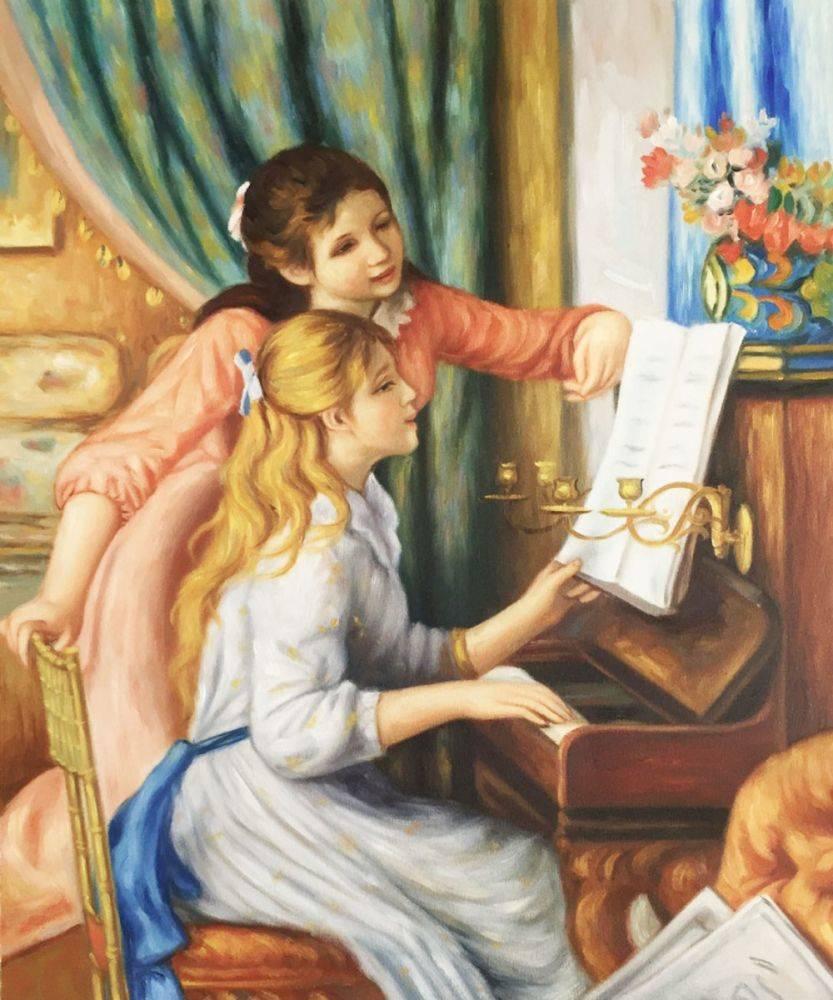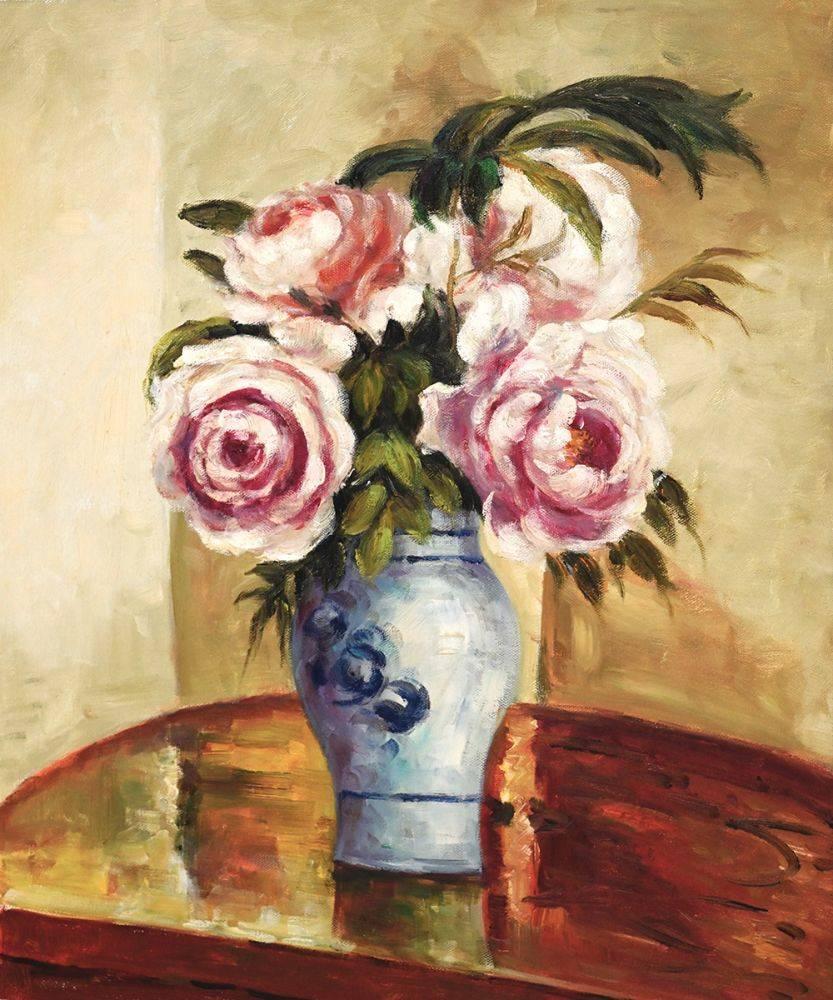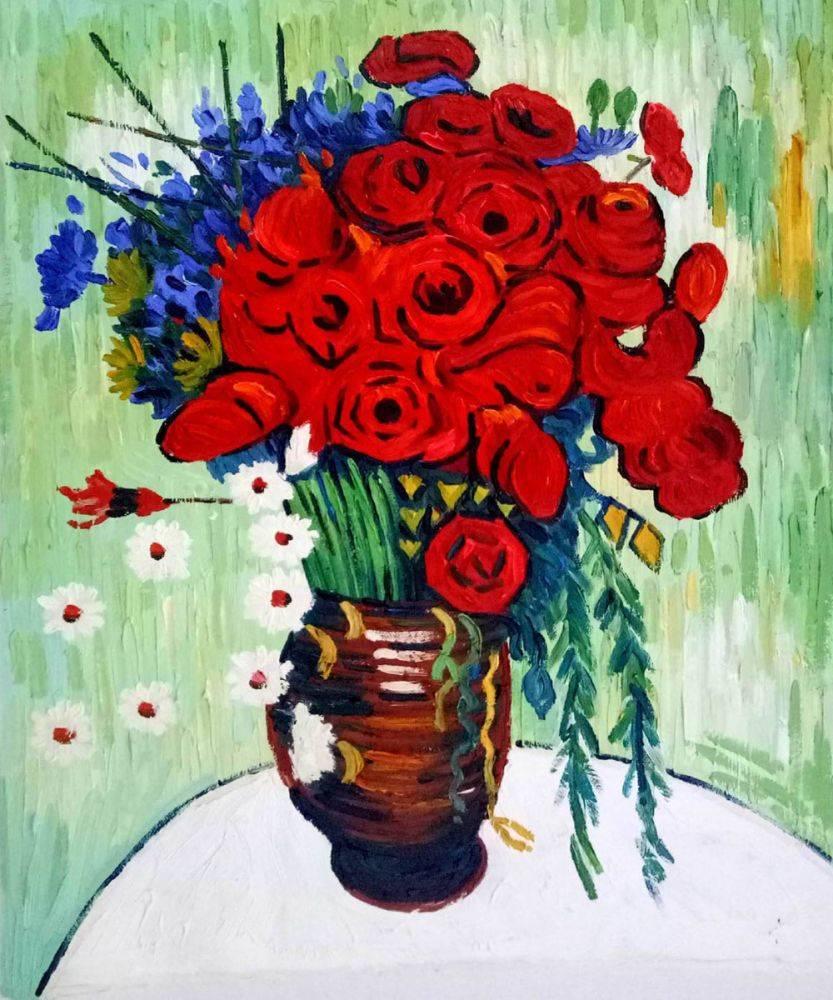| In 1888, in ill health, Van Gogh moved to Arles with Gauguin for a brief period for release from Paris. At Arles, fraught with internal tension, Van Gogh mutilated his left ear in the course of his first attack of dementia. His paintings from this period include the incomparable series of sunflowers: Two Sunflowers, Vase with Twelve Sunflowers, Four Cut Sunflowers and Sunflowers. |

Van Gogh – Two Sunflowers |
Dr. Jan Hulsker, one of the world’s foremost scholars of Vincent van Gogh, suggests that the sunflower series “perhaps more than any other of his paintings, have made him known throughout the world. They are often the only works with which he is identified.” In recent years a great deal of attention has been devoted to the authenticity of some of the sunflower paintings (namely, the Yasuda version). Most experts, however, have come to the conclusion that the Yasuda work is genuine. Unfortunately the arguments about authenticity have detracted from more critical and analytical studies of the works themselves–involved critical commentary of the sunflower series is surprisingly difficult to find. Overall, Jan Hulsker’s observation of the sunflower series truly mirrors Vincent’s own–they would indeed prove to be the works that Vincent is best beloved for.
Van Gogh once said in a letter to his brother, Theo in 1889, “You may know that the peony is Jeannin’s, the hollyhock belongs to Quost, but the sunflower is mine in a way.” |

Van Gogh – Bedroom At Arles |
Vincent van Gogh’s time in Arles, France was a pivotal point in his life. After years of study and struggle Vincent moved to the south in an attempt to further explore his art. Many of Van Gogh‘s most renowned works originated in Arles. And yet, at the period in which Vincent was at his most productive, he was alone. |
| Called “fou-rou” (crazy red-head) by many of the townspeople of Arles, Vincent was often viewed with suspicion and scorn. A number of Vincent’s letters to his brother, Theo, reflect his isolation and his loneliness. And yet one family welcomed Vincent and encouraged his work. In many respects, the Roulin family were Vincent’s only friends in Arles. Always challenged to Roulins to be extremely accommodating and patient. |

Van Gogh – Augustine Roulin |
In total, Van Gogh painted or sketched 25 works of the Roulin family, including one of Augustine Roulin. Thanks to the old postman, Joseph Roulin, and his family–to their kindness toward this eccentric and troubled painter–Vincent was able to produce some of his most beloved works. During Van Gogh’s period of illness he was confined first to the Arles hospital, then to the asylum at Saint-Remy, where, in 1889, he painted the swirling, climactic Starry Night. Starry Night is probably Vincent Van Gogh’s most famous painting. Instantly recognizable because of its unique style, this work has been the subject of poetry, fiction, CD-ROMs as well as the well known song “Vincent” or “Starry, Starry Night” by Don McLean.  While there’s no denying the popularity of Starry Night, it’s also interesting to note that there is very little known about Vincent’s own feelings toward his work. This is mainly due to the fact that he only mentions it in his letters to Theo twice, and then only in passing. In his correspondence with his brother, Vincent would often discuss specific works in great detail, but not so in the case of Starry Night. Why? It’s difficult to say. While there’s no denying the popularity of Starry Night, it’s also interesting to note that there is very little known about Vincent’s own feelings toward his work. This is mainly due to the fact that he only mentions it in his letters to Theo twice, and then only in passing. In his correspondence with his brother, Vincent would often discuss specific works in great detail, but not so in the case of Starry Night. Why? It’s difficult to say.
Some people have made stylistic comparisons to Vincent’s other well-known and equally turbulent Seascape At Saintes-Maries-De-La-Mer. Does the tumultuous style of these works reflect a tortured mind? Or is there something more we can read within the whorls Vincent’s raging night sky? This is what makes Starry Night not only Vincent’s most famous work, but also one of its most frequently interpreted in terms of its meaning and importance.
Some people have speculated about the eleven stars in the painting. While it’s true that Vincent didn’t have the same religious fervour in 1889, when he painted the work, as he did in his earlier years, there is a possibility that the story of Joseph in the Old Testament may have had an influence on the composition of the work. |
| ‘Look, I have had another dream’ he said, ‘I thought I saw the sun, the moon and eleven stars, bowing to me.’ |
| Genesis 37:9 |
Whatever the interpretations or underlying meanings, Starry Night stands out as one of the most important works of art produced in the nineteenth century. After painting Wheatfields With Crows during the last three months of his life in 1890, Van Gogh’s work began projecting ominous overtones of distress. Two days later, he shot himself, dying in the arms of his brother shortly after.
Some of Van Gogh’s other notable paintings include, The Seine Bridge at Asnieres, Old Man With His Head In His Hands and The Reaper. For a list of more Van Gogh paintings, visit overstockArt.com. |





